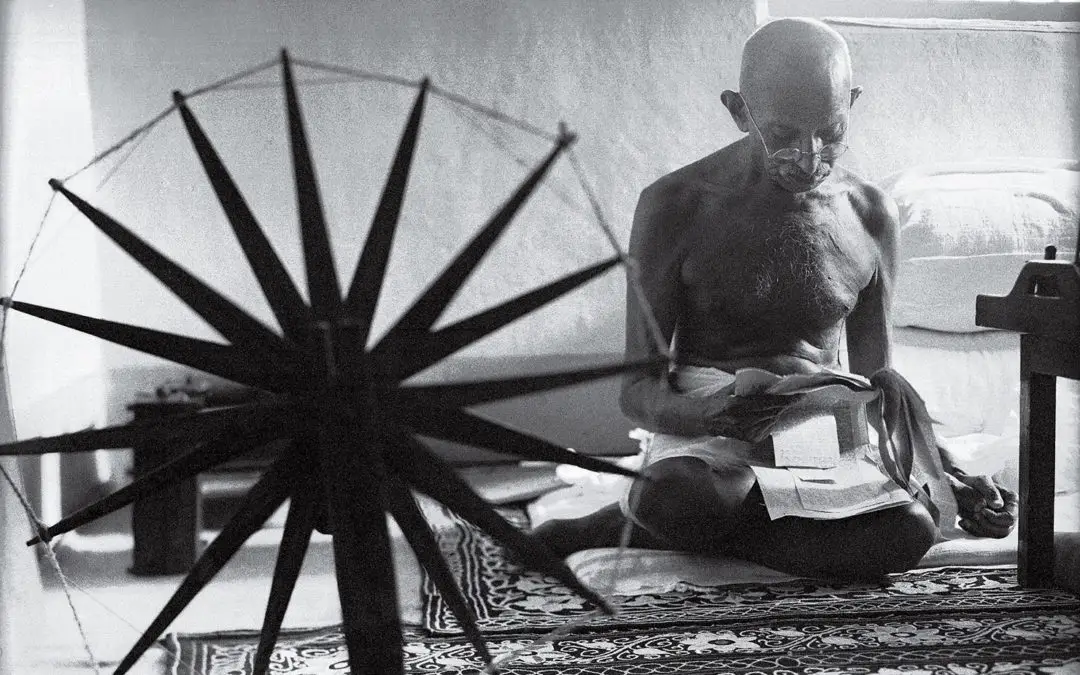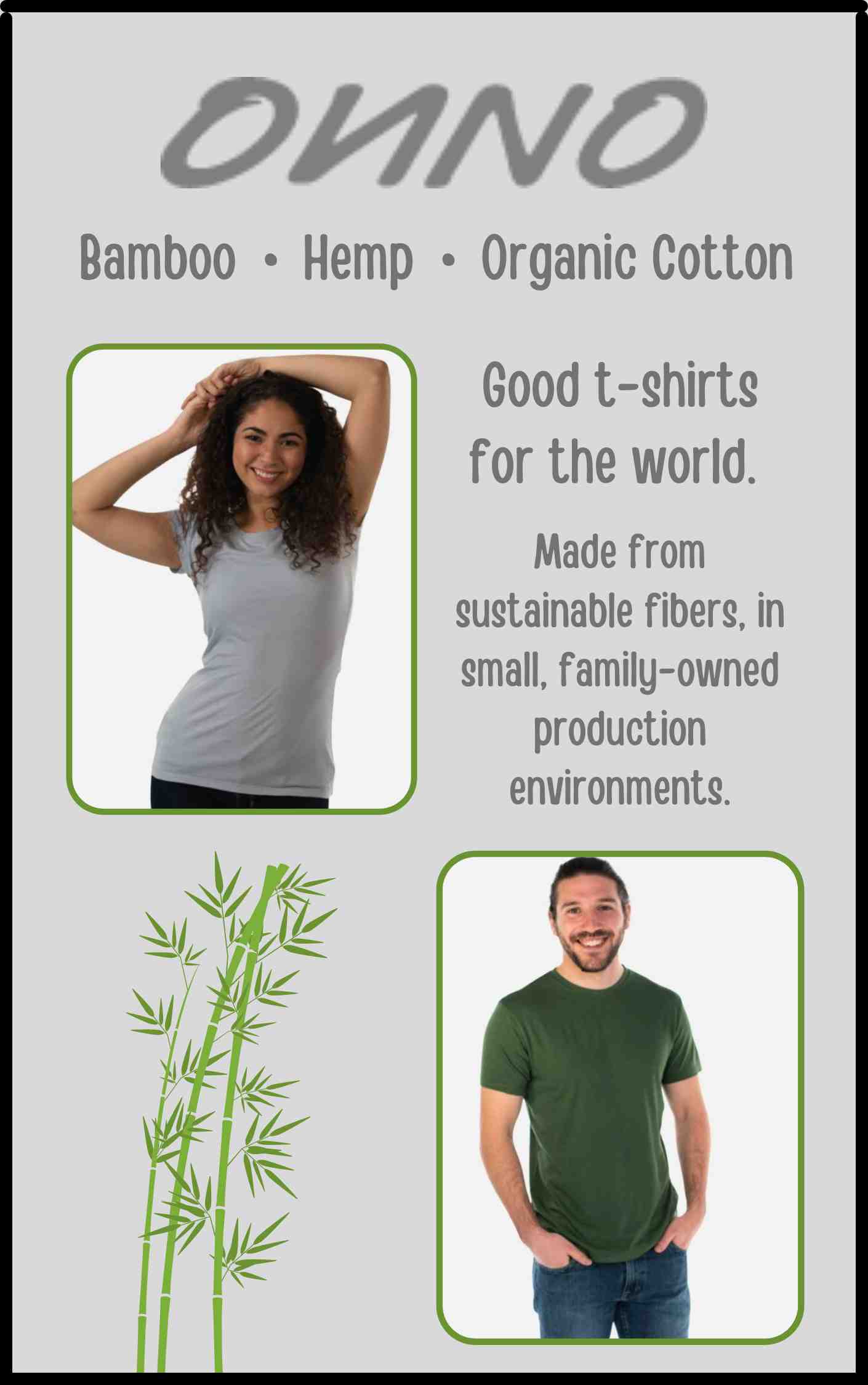There’s a lot of talk these days about wealth distribution and Social Justice Warriors. For many, these phrases are charged with deep and divisive political connotations. I guess you’d know which side I’m on if I told you I wrote my University application essay on Mahatma Gandhi. Yes, he was one of the most celebrated Social Justice Warriors of all time. Most of us remember Gandhi for his pious opposition to violence, but his real protest was against Western imperialism. And like some of us in the bamboo business, Gandhi was very outspoken against the cotton industry.
Born in India but educated in London, Mahatma Gandhi was passionate about the sovereignty of his fellow countrymen. As a lawyer, it was clear to him that their British overlords were unjustly overstepping their authority and subjecting the people of India.
Indian cotton and interwoven exploitation
The picture above shows Gandhi spinning his own cotton in protest of British Imperialism, similar to the more famous demonstration where he and his followers collected their own salt on the beaches of Dandi (Salt Satyagraha) in 1930.
Gandhi also made the following observations about the economics of Indian cotton and the systematic exploitation of India for her raw materials under British rule.
Step 1: English people buy Indian cotton in the field, picked by Indian labor at seven cents a day, through an optional monopoly.
Step 2: This cotton is shipped on British ships, a three-week journey across the Indian Ocean, down the Red Sea, across the Mediterranean, through Gibraltar, across the Bay of Biscay and the Atlantic Ocean to London. One hundred percent profit on this freight is regarded as small.
Step 3: The cotton is turned into cloth in Lancashire. You pay shilling wages instead of Indian pennies to your workers. The English worker not only has the advantage of better wages, but the steel companies of England get the profit from building the factories and machines. Wages; profits; all these are spent in England.
Step 4: The finished product is sent back to India at European shipping rates, once again on British ships. The captains, officers, and sailors of these ships, whose wages must be paid, are English. The only Indians who profit are a few lascars who do the dirty work on the boats for a few cents a day.
Step 5: The cloth is finally sold back to the kings and landlords of India who got the money to buy this expensive cloth out of the poor peasants of India who worked at seven cents a day.
Threads of justice
Shortly before Gandhi’s death, India managed to achieve political independence from Great Britain. But the struggle for economic independence has dragged on for many decades, all throughout the developing world. Fast fashion manufacturers continue to build factories in places like China, Bangladesh and Malaysia, taking advantage of pitifully low wages while taking the high profits home to their native countries. As a result, the underpaid workforce is double insulted, first by their low wages and secondly, because the wealth they create for their employees is all shipped far off without benefit to their own communities.
This is the scenario that sustains a cycle of poverty in so many developing nations, while wealthier nations are able to steadily extract wealth and resources for those disadvantaged regions. And this underscores the importance of supporting fair trade brands and third-party certification systems that ensure the just treatment of workers.
But fair trade is just the beginning. What they really need, and Gandhi clearly understood, is local ownership. Communities need more than decent jobs. They need a way to keep a share of the profits, and an incentive to reinvest and persevere. Exploitation is not the fuel of sustainable innovation.
Natural fibers for environmental justice
Beyond social justice, the movement for natural fibers represents a battle for environmental protection. Conventional cotton farming is highly chemically intensive, involving obscene quantities of herbicides and pesticides. Unlike the profits, those toxic substances will stay behind, long after the products and their proceeds have left the building.
Sustainable and environmentally conscious crops and farming techniques offer local empowerment and cleaner, safer conditions. Bamboo, when managed responsibly, brings an opportunity for economically challenged communities to grow a cash crop with hundreds of commercial applications. Grown in these equatorial regions, bamboo requires little or nothing in the way of chemical inputs.
To enact real change, what’s needed is local ownership, economic autonomy, and education. With that, there’s no end to what a few hand-working and properly incentivized people can do with a plant like bamboo.
Bamboo promotion
If you’re a fan of social justice, civil disobedience, and the responsible use of bamboo and other natural fibers, then you’ll love reading some of these other in-depth articles.
- Bamboo for poverty mitigation
- Fighting malaria with bamboo
- Bamboo clothing and textiles
- INBAR: The international bamboo network
FEATURE PHOTO: Fisher, F.B., 1932 That Strange Little Brown Man Gandhi, New York: Ray Long & Richard Smith, Inc.
NOTE: This article originally appeared in February 2010, with revisions in November 2019.










Let’s hope the Indians don’t have a long memory when our p/m does a trade deal